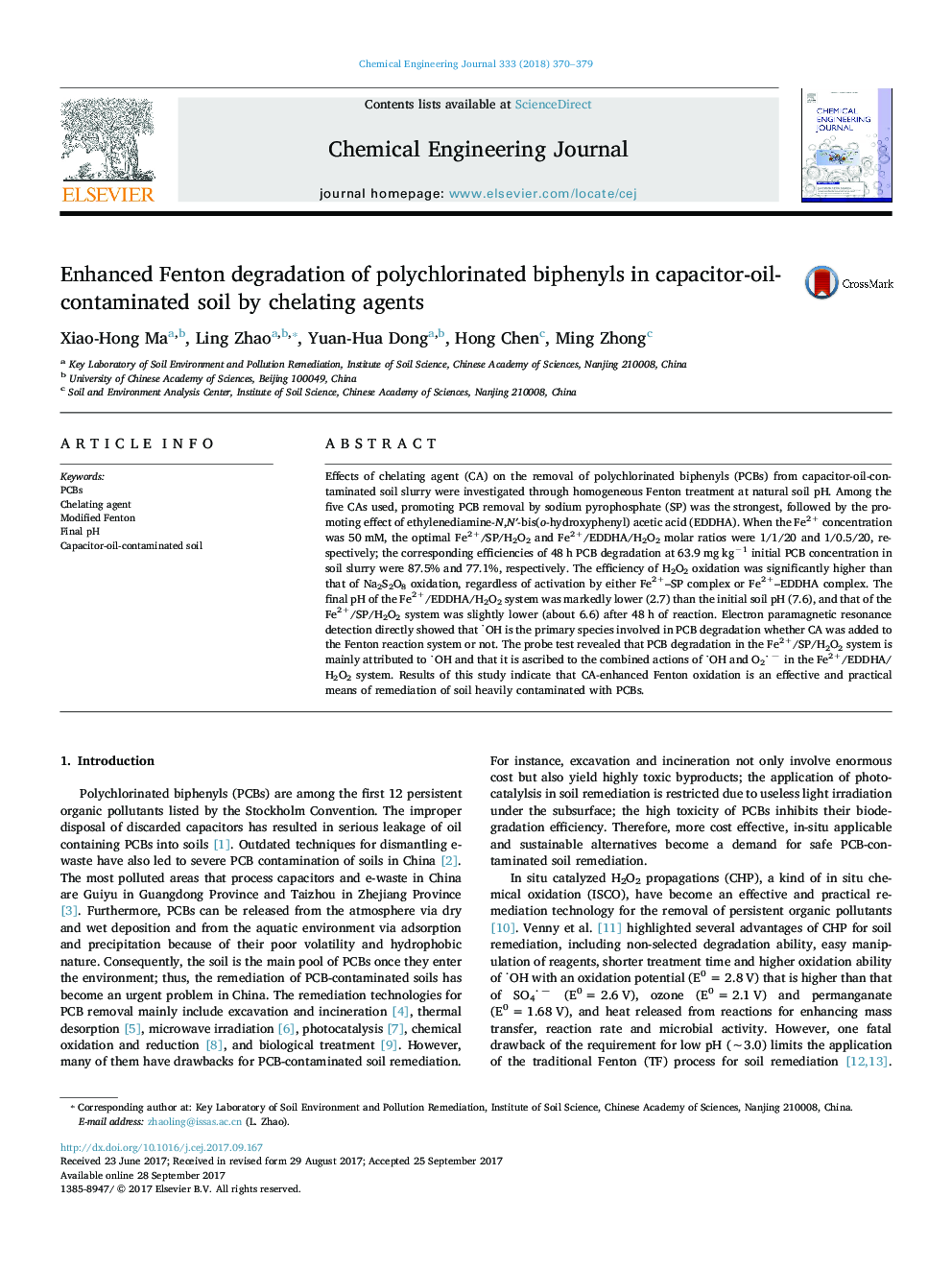| کد مقاله | کد نشریه | سال انتشار | مقاله انگلیسی | نسخه تمام متن |
|---|---|---|---|---|
| 4762722 | 1422945 | 2018 | 10 صفحه PDF | دانلود رایگان |
عنوان انگلیسی مقاله ISI
Enhanced Fenton degradation of polychlorinated biphenyls in capacitor-oil-contaminated soil by chelating agents
ترجمه فارسی عنوان
تشدید تخریب فنتون از دی اکسید کربن های پلی کربنات در خاک آلوده به نفت توسط عوامل شیمیایی
دانلود مقاله + سفارش ترجمه
دانلود مقاله ISI انگلیسی
رایگان برای ایرانیان
موضوعات مرتبط
مهندسی و علوم پایه
مهندسی شیمی
مهندسی شیمی (عمومی)
چکیده انگلیسی
Effects of chelating agent (CA) on the removal of polychlorinated biphenyls (PCBs) from capacitor-oil-contaminated soil slurry were investigated through homogeneous Fenton treatment at natural soil pH. Among the five CAs used, promoting PCB removal by sodium pyrophosphate (SP) was the strongest, followed by the promoting effect of ethylenediamine-N,Nâ²-bis(o-hydroxyphenyl) acetic acid (EDDHA). When the Fe2+ concentration was 50 mM, the optimal Fe2+/SP/H2O2 and Fe2+/EDDHA/H2O2 molar ratios were 1/1/20 and 1/0.5/20, respectively; the corresponding efficiencies of 48 h PCB degradation at 63.9 mg kgâ1 initial PCB concentration in soil slurry were 87.5% and 77.1%, respectively. The efficiency of H2O2 oxidation was significantly higher than that of Na2S2O8 oxidation, regardless of activation by either Fe2+-SP complex or Fe2+-EDDHA complex. The final pH of the Fe2+/EDDHA/H2O2 system was markedly lower (2.7) than the initial soil pH (7.6), and that of the Fe2+/SP/H2O2 system was slightly lower (about 6.6) after 48 h of reaction. Electron paramagnetic resonance detection directly showed that OH is the primary species involved in PCB degradation whether CA was added to the Fenton reaction system or not. The probe test revealed that PCB degradation in the Fe2+/SP/H2O2 system is mainly attributed to OH and that it is ascribed to the combined actions of OH and O2â in the Fe2+/EDDHA/H2O2 system. Results of this study indicate that CA-enhanced Fenton oxidation is an effective and practical means of remediation of soil heavily contaminated with PCBs.
ناشر
Database: Elsevier - ScienceDirect (ساینس دایرکت)
Journal: Chemical Engineering Journal - Volume 333, 1 February 2018, Pages 370-379
Journal: Chemical Engineering Journal - Volume 333, 1 February 2018, Pages 370-379
نویسندگان
Xiao-Hong Ma, Ling Zhao, Yuan-Hua Dong, Hong Chen, Ming Zhong,
